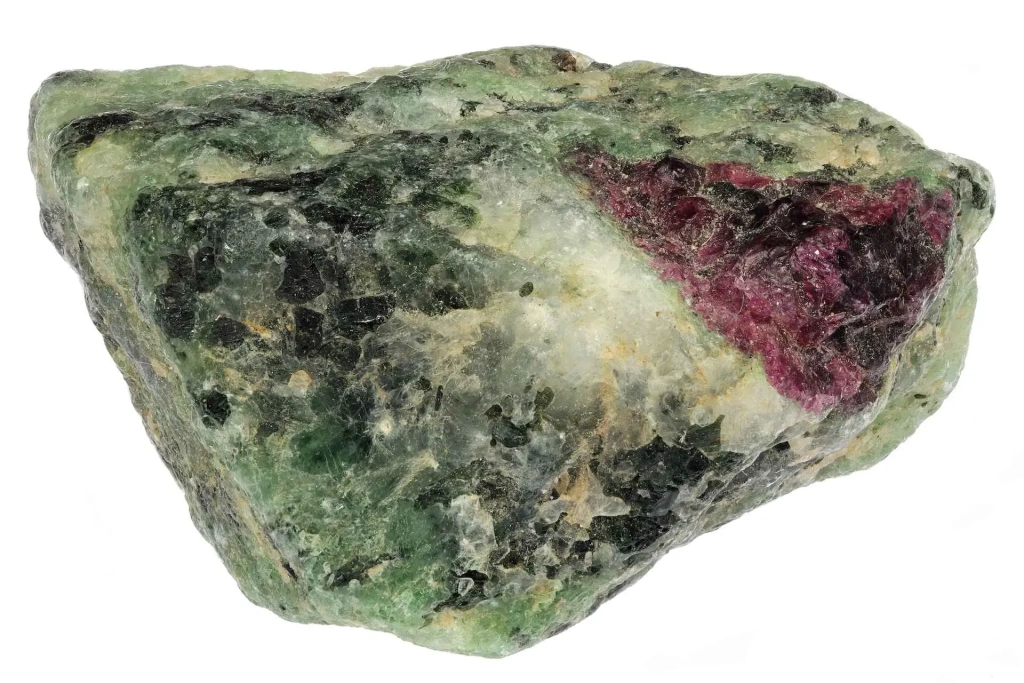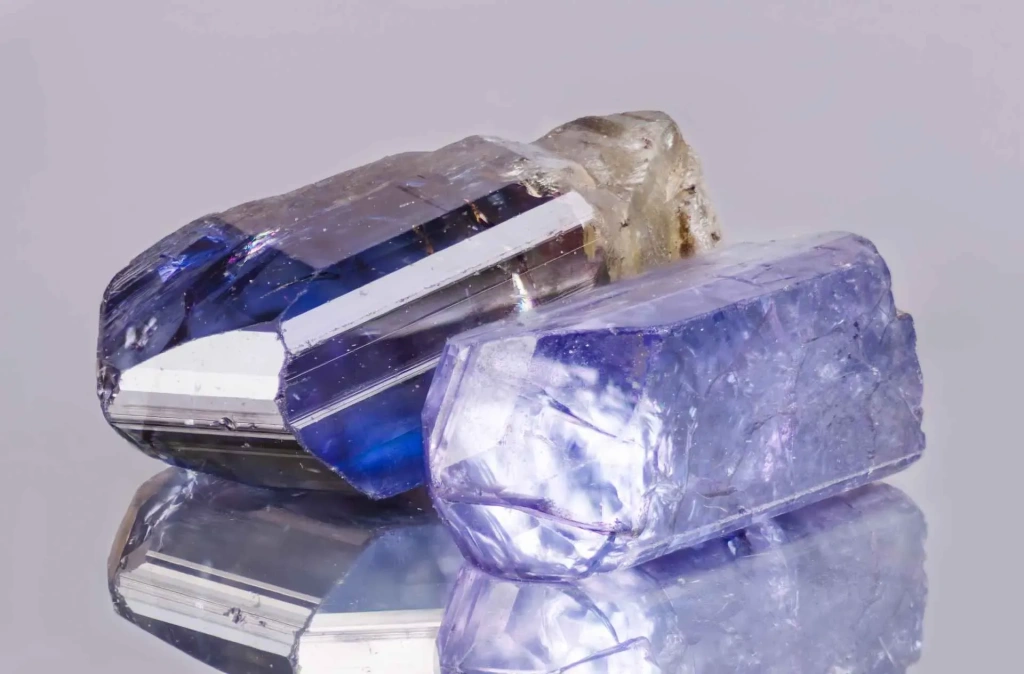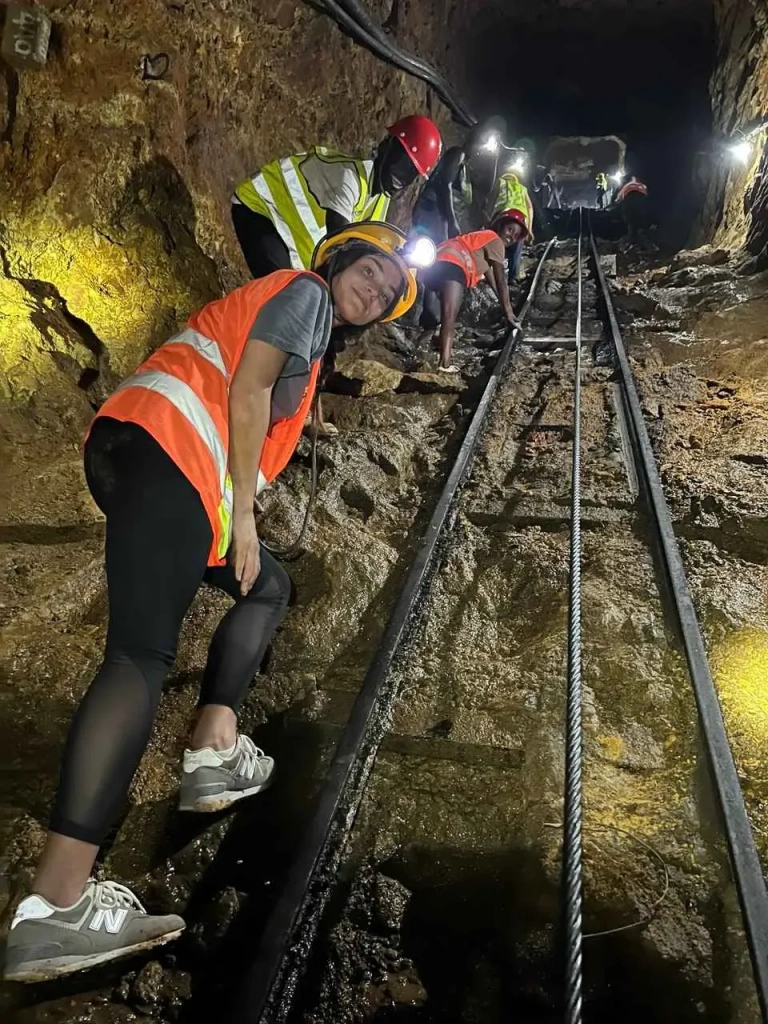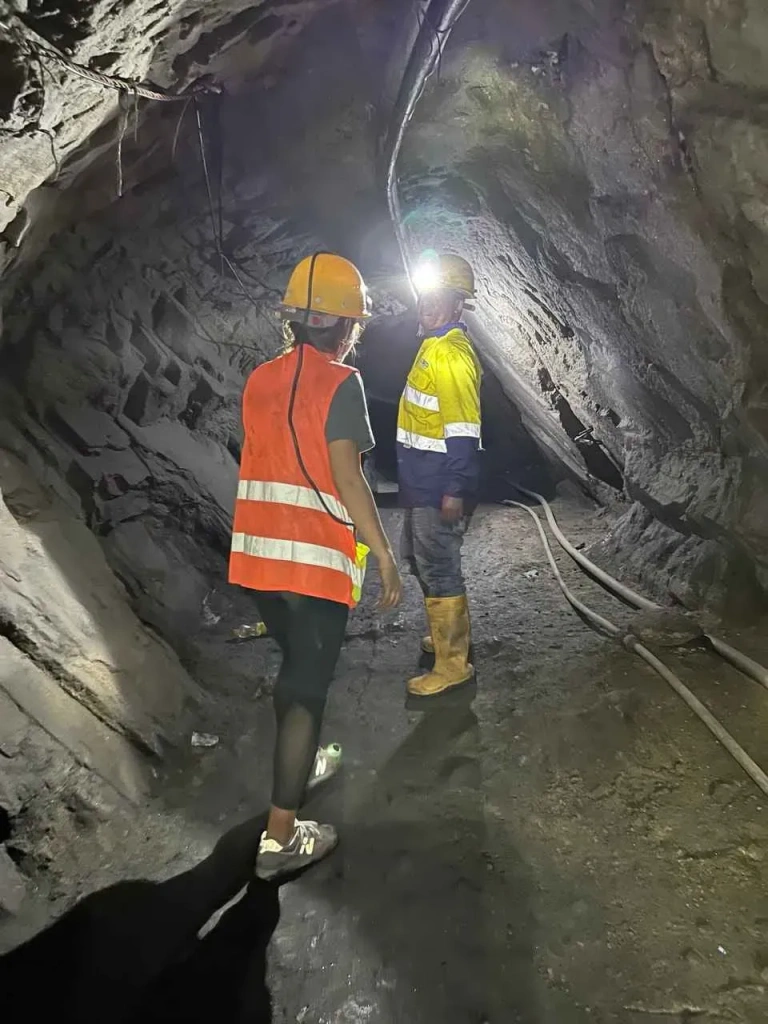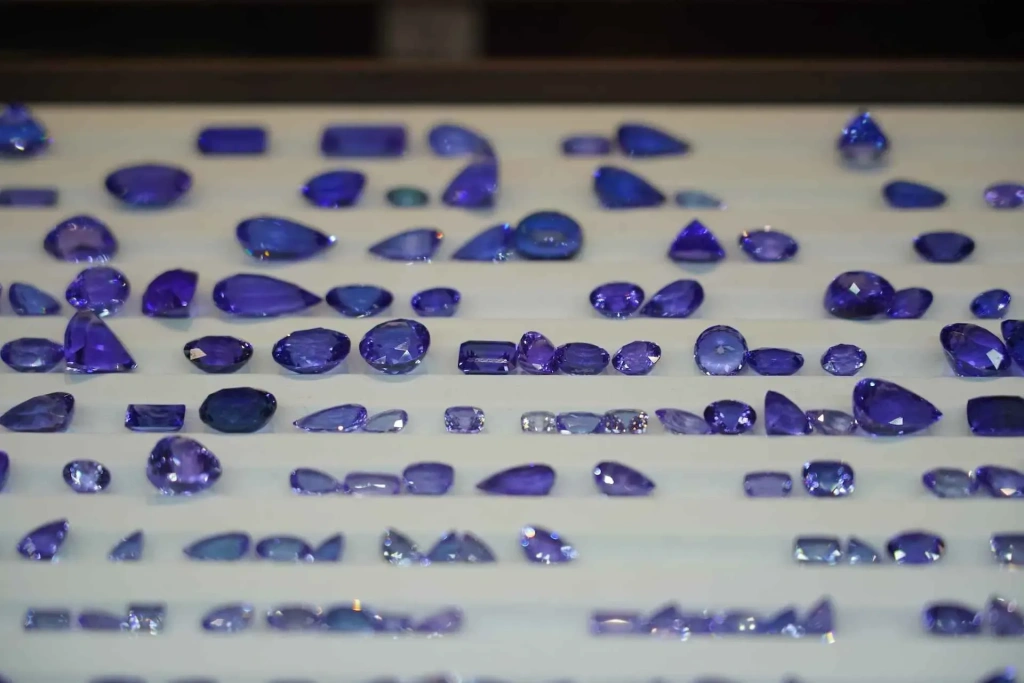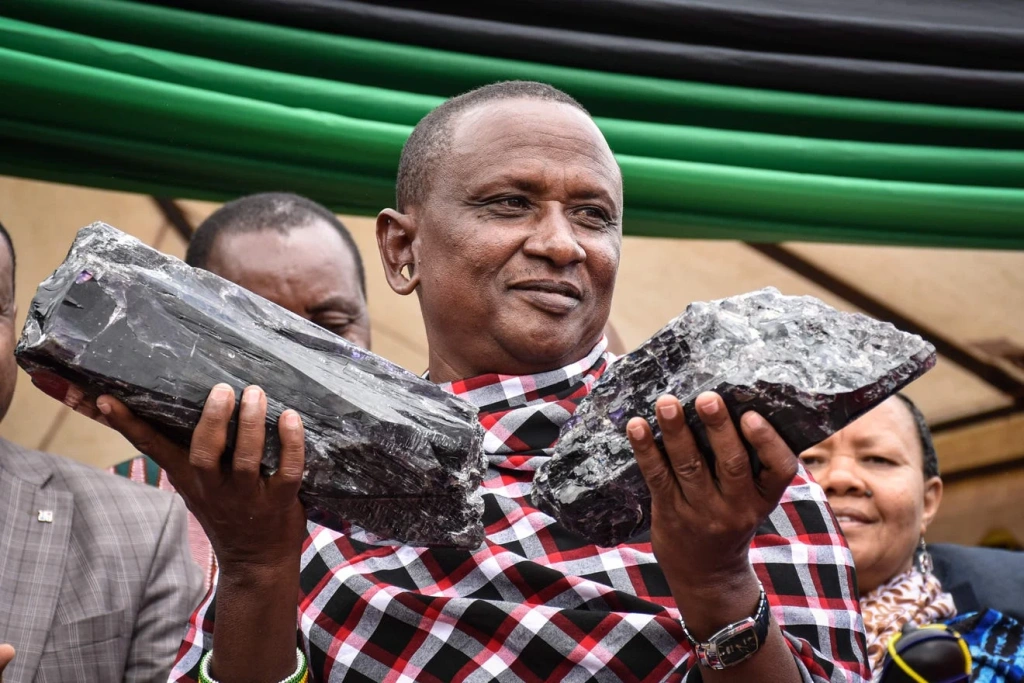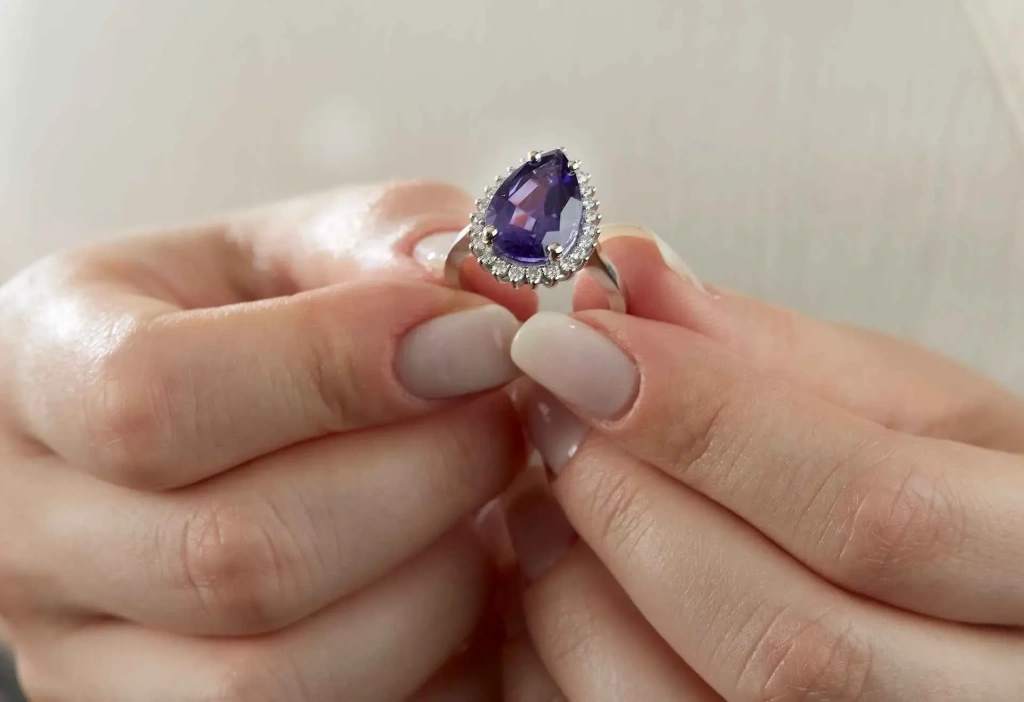In 1968, Tiffany & Co. launched a new collection. The company was confident in its success because striking large rings were adorned with the recently discovered gemstone – tanzanite. This translucent bluish violet stone attracted jewelers with its uniqueness. It is mined in only one place on the planet: in Tanzania, at the foot of Mount Kilimanjaro.
In this short blog post, we will explore the history of tanzanite, its features, price, grading, tanzanite mines, and more.
How was tanzanite discovered?
There are several stories of how tanzanite was discovered. According to the version officially recognized by the Tanzanian government, the first tanzanite crystal was found in January 1967 by a local resident named Jumanne Mhero Ngoma. Three years later, he was awarded a certificate and a reward of 50,000 shillings.
However, there is another version that has gained more recognition in the West. According to this version, the rare gem was found by tailor Manuel de Souza, affectionally known as “Mad Manuel”. He dreamed of getting rich through the extraction of gold and precious stones. Having earned some money by sewing clothes, de Souza set off to Tanzania in search of new gold and ruby deposits. His expedition was accompanied by several locals – Maasai hunters.
Nothing significant was found, but Mad Manuel did not lose hope and continued to explore the area. On July 7, 1967, his attention was drawn to a translucent purple-red stone stumbled upon at the Merelani hills area.
Initially, the prospector mistook the untreated tanzanite for sapphire because of its similar color. This guess proved wrong: de Souza tested the found stone for hardness, and it turned out to be much softer than sapphire. Nevertheless, Manuel felt he had found something unique. He sent the stone for examination. It turned out to be an unusual variety of the long-known mineral – zoisite.
Tanzanite is a rare variety of zoisite
Zoisite is an inexpensive semi-precious stone, discovered in the early 19th century. It is mined almost all over the world: in Eurasia, North and South America, Africa. In appearance, zoisite can be so different that it is hard to believe it is the same mineral. It can be transparent and matte, and the color varies from yellow to emerald with raspberry veins. Blue zoisite can resemble blue topaz or even the expensive blue sapphire.
However, tanzanite zoisites are not found anywhere else in the world other than in Tanzania. This clean and bright stone really does resemble sapphire and other blue gems. It attracted the attention of Tiffany & C’s jewelers. The stone impressed Henry B. Platt – the great-grandson of the company's founder, Charles Tiffany. It was Platt who came up with the name "tanzanite" and ensured the worldwide fame of this rare gemstone.
Why tanzanite is so special?
Striking appearance
The main feature of tanzanite is its bright and deep color. The stone looks different depending on the lighting, like the famous blue or white dress from the meme. Similarly, tanzanite can appear golden-brown, purple, or blue-violet from different angles. Professionals call this phenomenon pleochroism.
The appearance of the stone largely depends on the processing. Jewelers try to enhance the naturally blue color of tanzanite through cutting and other methods like heat treatment. So, it often ends up resembling blue sapphire or blue diamond. However, other colors also exist, for example, green tanzanite.
There is a legend that in the movie "Titanic," the role of the "Heart of the Ocean" diamond was played by tanzanite. Allegedly, director James Cameron liked how this clean and bright faceted stone looked on screen. But this is a myth: several necklaces were made for the film, and all of them were encrusted with synthetic spinels.
Uniqueness
Tanzania is the only place on the planet where tanzanite is mined, making this gemstone rarer than a diamond. Deposits of various minerals are formed at the junction of two tectonic plates under the influence of temperature and pressure. Each plate has a unique composition. And it was in Tanzania, at the foot of Kilimanjaro, that tanzanite – zoisite with a mixture of chromium and vanadium ions, which gave the stone its characteristic blue color, was formed. No other similar deposits are known today.
Relatively low price
In terms of hardness, tanzanite is inferior to other gemstones. On the , the hardness of tanzanite is like glass - 6.5-7 units. This means it is softer than the famous diamonds, sapphires, and rubies. However, tanzanite is cheaper. This is the second reason for the stone's popularity.
While tanzanite hasn't been synthesized, there might be tanzanite imitations on the market, and one should be cautious.
Experts say that jewelry with tanzanite can be a good investment. The only Tanzanite deposit in northern Tanzania is gradually depleting, so new stones will soon be unavailable. And the demand for those striking colored stones is only growing. Most likely, the price will also rise, especially for the top-grade Tanzanite.
How is tanzanite mined?
The only tanzanite mining area is located on the Merelani Plateau in the Arusha region near Kilimanjaro. The area is a strip about two by four kilometers wide. Until the 1990s, the stone was mined by private companies. Then the Tanzanian government decided to take control of this process and organize it. Since then, a special license is required to mine Tanzanite.
The deposit is divided into four zones: A, B, C, and D. Zones A and C are allocated for foreign companies, while B and D are for Tanzanian prospectors. The main volume of minerals is brought by zone C, as it is the most convenient for development. Since 2014, the mining of Tanzanite in this zone has been carried out by the British company Sky Associates Group Ltd.
Initially, Tanzanite was found on the surface of the earth. Today, the valuable mineral is extracted from a depth of 200-400 meters. The stones are sorted and processed on-site.
After erecting a 24-kilometer (15-mile) perimeter wall around the mines to enhance security and deter smuggling, production surged from 147.7 kilograms in 2018 to a record 781.2 kilograms in 2019.
How to choose a high-quality tanzanite?
Tanzanite is a finicky material: the stone's appearance largely depends on the skill of the cutter. To determine the quality and value of tanzanite, a grading system is used. The stone is evaluated based on four parameters: color, clarity, cut, and carat weight.
Color
Two shades of treated tanzanite are typically graded: bluish violet (violet dominant) and violet blue (blue dominant). Each is assessed on a ten-point scale depending on color intensity.
Clarity
The presence of inclusions in the stone is examined. Four groups are distinguished:
- EC (Eye Clean – defect-free),
- SI (Slightly Included – with slight inclusions),
- MI (Moderately Included – with small inclusions),
- HI (Heavily Included – with large inclusions).
Cut
Angles and proportions are evaluated, but most importantly, the stone's brilliance. The better the facets reflect light and the brighter they shine, the higher the cut quality. The cut grading system looks like this:
- Excellent
- Very Good, Good
- Fair
- Poor
Carat weight
The weight of gemstones is measured in carats. One carat equals 0.2 grams.
The largest tanzanite stones were found in 2020. Maasai miner Saniniu Laizer and his team discovered two stones weighing 9.27 kg and 5.103 kg. The Tanzanian government bought the tanzanites for $3.3 million. Saniniu Laizer decided to spend the money on developing his community: building a school and a shopping mall.
Tanzanite jewelry. Is tanzanite cheap or expensive?
Tanzanite is no longer a novelty in the jewelry market. In 2017, the stone celebrated its fiftieth anniversary. Since then, it has won the hearts of gemstone enthusiasts. Many celebrities have appeared wearing tanzanite jewelry: Anne Hathaway, Cate Blanchett, Sarah Jessica Parker, Penelope Cruz, Beyoncé.
In 2002, tanzanite was chosen by the American Gem Trade Association in the Birthstone List — a list of stones by birth date, published since 1912. Tanzanite is recommended to be worn by those born in December. It also became a traditional gift for the 24th wedding anniversary.
The price of a gold ring featuring tanzanite begins at $300, while earrings start at $150. Because tanzanite is a captivating and sought-after gemstone, jewelry with tanzanite tends to be bold and substantial, often accented with diamonds. As a result, the price range can vary considerably. For instance, a platinum Tiffany ring adorned with tanzanite and a cluster of diamonds is priced at $13,200.
You can admire jewelry with tanzanite not only in jewelry stores but also in the world's only Tanzanite Museum. It is located near the gem mining area in the city of Arusha. This museum is a project of The Tanzanite Experience jewelry company, which has been in existence since 2015. The company produces earrings, rings, pendants, and other jewelry with tanzanites. Their laboratory allows them to guarantee the quality of each stone. But the main feature of The Tanzanite Experience is a workshop where Maasai women craft earrings and necklaces in traditional African style. You can buy them at several branded stores in Africa or online.
All content on Altezza Travel is created with expert insights and thorough research, in line with our Editorial Policy.
Want to know more about Tanzania adventures?
Get in touch with our team! We've explored all the top destinations across Tanzania. Our Kilimanjaro-based adventure consultants are ready to share tips and help you plan your unforgettable journey.
















